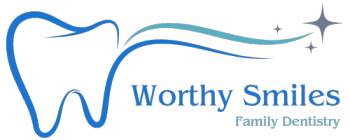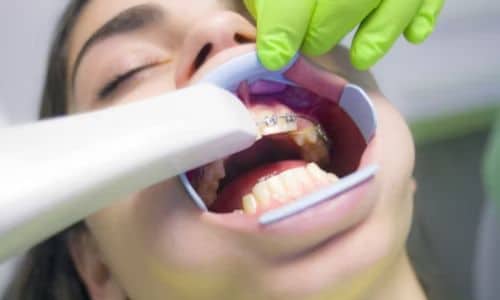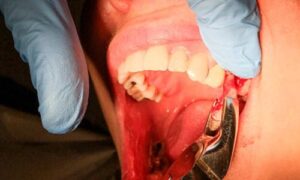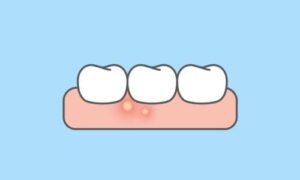Introduction
When achieving a straighter, more confident smile, the options seem endless. Braces, Invisalign, and clear aligners are all effective treatments, but which suits you? In this article, we will explore these orthodontic solutions in detail, providing insights based on expertise and real-life experiences to help you make an informed decision. So, let’s dive into the world of orthodontics and find the perfect solution for your smile transformation. Whether you have crooked teeth, gaps, or bite issues, braces have long been a popular choice for orthodontic treatment. Traditional braces consist of metal brackets and wires that gradually shift your teeth into alignment. Invisalign and clear aligners, on the other hand, offer a more discreet option with removable, custom-made trays to fit your teeth. Let’s explore the pros and cons of each treatment to help you determine which one suits your needs best.
Braces: A Time-Tested Classic
Braces have been a tried-and-true method for straightening teeth for decades. They consist of metal or ceramic brackets bonded to your teeth, connected by wires that gradually shift your teeth into their desired positions. Braces are known for their effectiveness in correcting complex dental issues such as severe overcrowding or misalignment. However, they can be more noticeable and may require more frequent visits to the orthodontist for adjustments.
How Braces Work
Braces apply continuous pressure on your teeth, forcing them to move over time. The adjustments made by your orthodontist ensure a precise and effective realignment. The pressure exerted by braces stimulates the bone surrounding your teeth, allowing it to remodel and accommodate the new positions. This gradual movement helps achieve a straighter and healthier smile. Additionally, modern braces come in various options, such as clear or ceramic brackets, making them less noticeable than traditional metal braces.
Pros of Braces
- Highly effective for complex dental issues. Braces are especially beneficial for correcting overcrowding, misalignment, and bite problems. They can also help improve oral health by making cleaning and maintaining proper hygiene easier. Additionally, braces can enhance facial aesthetics and boost self-confidence by giving you a beautiful and aligned smile.
- Suitable for patients of all ages. Braces are not limited to children and teenagers; adults can also use them. Regardless of age, anyone can benefit from braces to achieve a healthier and more attractive smile. Moreover, advancements in orthodontic technology have made braces more comfortable and less invasive, ensuring a more pleasant experience for patients of all ages.
- Covered by many insurance plans. This makes braces a more affordable option for patients, as they may be partially or fully covered by insurance. It is essential to check with your insurance provider to understand the extent of coverage for orthodontic treatment. Additionally, some orthodontic practices offer flexible payment plans to make braces more accessible to patients without insurance coverage.
Cons of Braces
- Visible metal or ceramic brackets. These brackets can be noticeable and may affect the appearance of the patient’s smile. However, advancements in orthodontic technology have led to the development of more discreet options, such as clear aligners, which are virtually invisible.
- Regular adjustments may cause discomfort. However, the discomfort experienced during adjustments is usually temporary and can be managed with over-the-counter pain relievers. Additionally, orthodontists are trained to minimize discomfort during adjustments by using gentle techniques.
- Dietary restrictions (e.g., avoiding certain foods). Dietary restrictions, such as avoiding sticky or hard foods, may be necessary to prevent damage to the aligners. However, clear aligners offer the advantage of being removable, allowing individuals to enjoy their favorite foods without restrictions during meal times.
Invisalign: The Virtually Invisible Option
Invisalign, on the other hand, offers a more discreet approach to teeth straightening. These clear plastic aligners are custom-made for your teeth and gradually shift them into place. Invisalign aligners are virtually invisible, making them a popular choice for individuals who want to straighten their teeth without drawing attention to their treatment. Additionally, the custom-made nature of Invisalign aligners ensures a comfortable fit and allows for easy removal when eating or cleaning.
How Invisalign Works
Invisalign uses a series of clear, removable aligners that you change every two weeks. They are almost invisible and can be easily removed for eating and cleaning. The aligners gradually shift your teeth into the desired position using gentle and controlled force. This allows for a more comfortable and convenient teeth-straightening experience than traditional braces.
Pros of Invisalign
- Virtually invisible, providing aesthetic appeal. Invisalign aligners are also more comfortable to wear than traditional braces, as they are made of smooth plastic and do not have any sharp edges or wires that can irritate. Additionally, since the aligners are removable, you can enjoy your favorite foods without restrictions.
- Removable for eating and oral hygiene. This means you can easily remove the aligners when you need to eat or brush your teeth, making it easier to maintain good oral hygiene throughout your treatment. Moreover, Invisalign aligners are custom-made for each individual, ensuring a precise and personalized fit for optimal results.
- No dietary restrictions. Invisalign aligners allow you to maintain your regular diet without any restrictions. This means you can enjoy all your favorite foods and beverages without worrying about damaging or staining your aligners.
- Smooth and comfortable aligners. Invisalign aligners are made from a soft and comfortable material that won’t irritate your gums or cheeks. This makes them more comfortable to wear throughout the day, allowing you to go about your daily activities without discomfort.
Cons of Invisalign
- Not suitable for complex orthodontic issues. Invisalign may not be the best option for individuals with severe bite problems or complex orthodontic issues that require more extensive treatment. In such cases, traditional braces or other orthodontic methods may be recommended to achieve the desired results.
- Requires discipline to wear aligners consistently. Invisalign requires high discipline to wear the aligners consistently, which must be worn for at least 20-22 hours a day. This means that individuals must be committed to wearing them even during meals and while drinking anything other than water.
- It can be more expensive than braces. The cost of Invisalign treatment can be higher than traditional braces due to the advanced technology and materials used to create the aligners. However, it is essential to consider that the cost may vary depending on the case’s complexity and the treatment duration.
Clear Aligners: The Alternative to Invisalign
Like Invisalign, clear aligners offer a discreet and comfortable way to straighten teeth. These aligners are also made of clear plastic but are an alternative to the Invisalign brand. Clear aligners are custom-made to fit your teeth and gradually shift them into the desired position. Removable, allowing for easy cleaning and eating, but should be worn for at least 20-22 hours daily for optimal results.
How Clear Aligners Work
Clear aligners function much like Invisalign, using a series of removable trays that gradually shift your teeth into alignment. Each tray is designed to apply gentle pressure to specific areas of your teeth, guiding them into the correct position over time. As you progress through each tray in the series, your teeth will continue to move until they reach their final alignment. Following your dentist’s instructions and regularly switching out the trays is essential to ensure the best results.
Pros of Clear Aligners
- Discreet and virtually invisible. Clear aligners are made of a transparent material, making them less noticeable than traditional braces. This allows you to maintain a natural appearance while undergoing orthodontic treatment. Additionally, clear aligners can be easily removed for eating, brushing, and flossing, providing convenience and flexibility in your daily routine.
- Removable for convenience. Clear aligners are designed to be easily removable, allowing you to enjoy your favorite foods without any restrictions. This feature also makes oral hygiene easier as you can brush and floss your teeth more effectively than traditional braces.
- Comfortable and irritation-free. Clear aligners are made from smooth and comfortable materials, reducing the likelihood of irritation or discomfort in your mouth. They are custom-made to fit snugly over your teeth, providing a more comfortable orthodontic experience than traditional braces.
Cons of Clear Aligners
- Limited availability and fewer brands to choose from. This means you may have limited options when selecting a provider or finding a brand that suits your needs. Additionally, clear aligners may not be suitable for more complex orthodontic cases, as they are primarily designed for mild to moderate teeth misalignment.
- It may not be suitable for complex cases. In such cases, traditional braces or other orthodontic treatments may be recommended by your orthodontist for more effective results. However, clear aligners can still be an excellent option for many individuals seeking a discreet and convenient way to straighten their teeth.
- Cost may vary depending on the brand. Some brands of clear aligners may be more expensive than others, so discussing the price with your orthodontist is essential. Additionally, some dental insurance plans may cover a portion of the cost for clear aligners, making them more affordable for some patients.
FAQ about braces, Invisalign, or clear aligners
Can I eat normally with Invisalign or clear aligners?
Yes, both Invisalign and clear aligners are removable, allowing you to enjoy your favorite foods without restrictions. Just remember to remove them while eating and clean your teeth before putting them back in.
Are braces painful?
Braces can cause some discomfort, especially after adjustments. However, this discomfort is manageable with over-the-counter pain relievers and usually subsides within a few days.
How long does treatment take with each option?
The duration of treatment varies depending on the complexity of your case. Generally, braces and clear aligners may take around 12-24 months, while Invisalign often takes less time.
Are clear aligners as effective as braces?
Clear aligners can be as effective as braces for mild to moderate orthodontic issues. However, for complex cases, braces may be a better option.
Can I get braces or clear aligners as an adult?
Absolutely! Orthodontic treatment is not limited to children and teenagers. Many adults opt for braces or clear aligners to improve their smiles.
Do insurance plans cover orthodontic treatments?
Many insurance plans do provide coverage for orthodontic treatments. Be sure to check with your insurance provider to understand your scope.
Conclusion
Choosing between braces, Invisalign, or clear aligners is a decision that should consider your unique dental needs, lifestyle, and preferences. Each option has its advantages and limitations, so it’s essential to consult with an orthodontist who can recommend the best treatment for you. Whether you opt for the time-tested braces, the nearly invisible Invisalign, or clear aligners, your journey to a straighter smile starts with a conversation with a dental professional. They will assess your dental issues and provide personalized recommendations based on their expertise. By discussing your concerns and goals, you can make an informed decision that aligns with your lifestyle and desired outcome. Remember, achieving a straighter smile that boosts your confidence and oral health is the ultimate goal.














